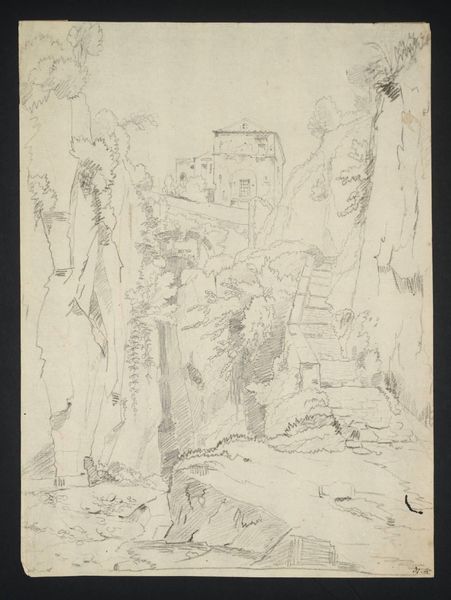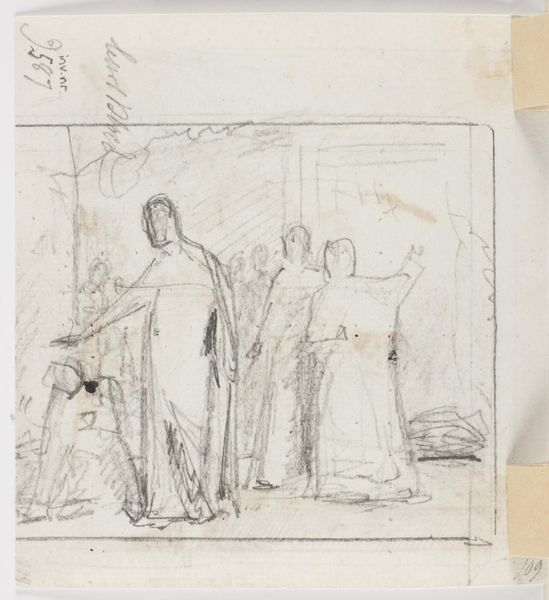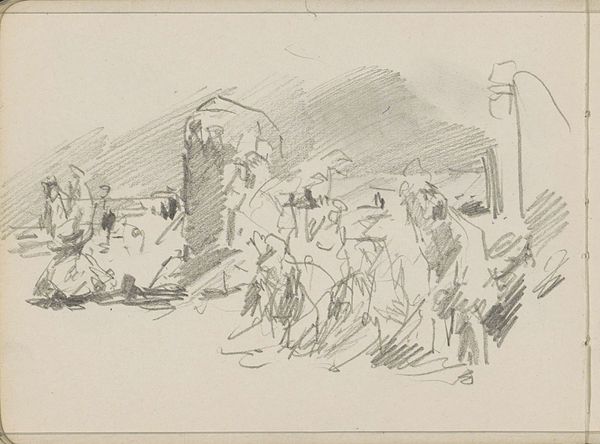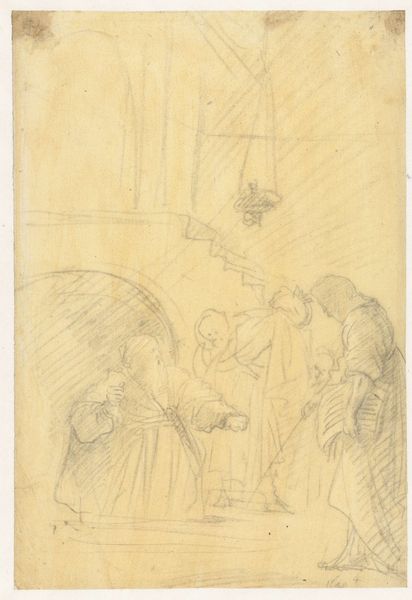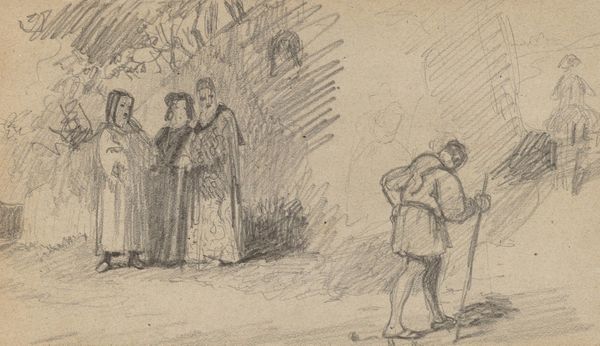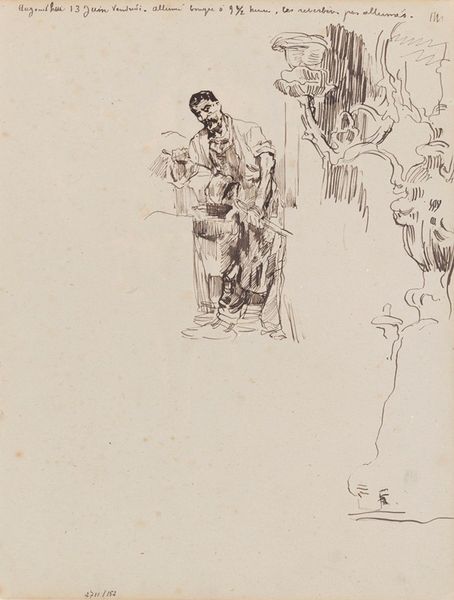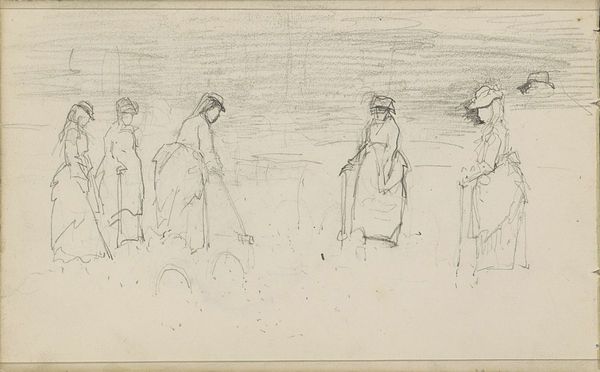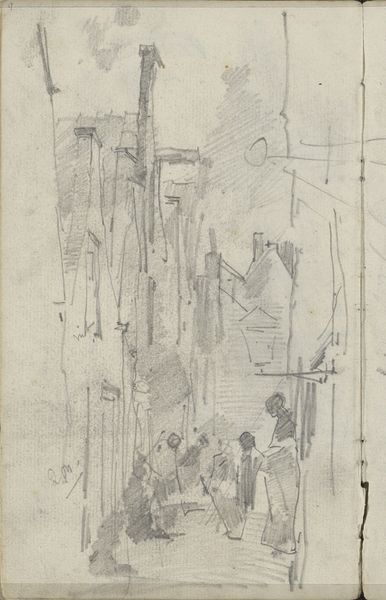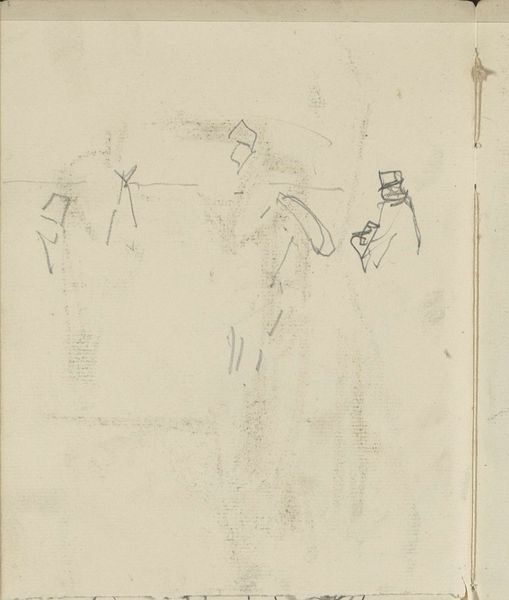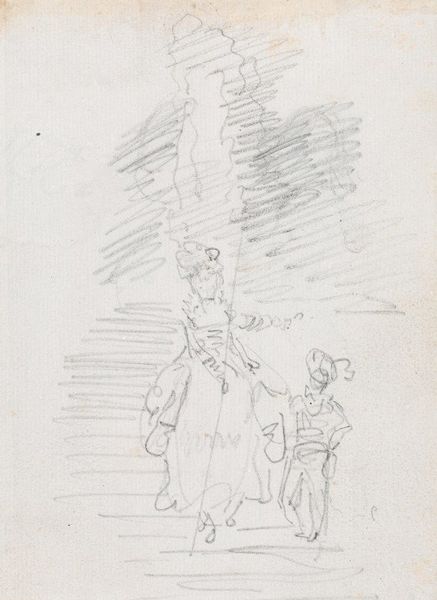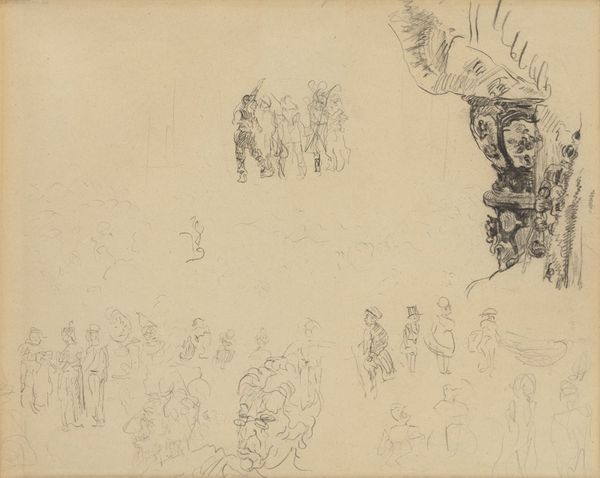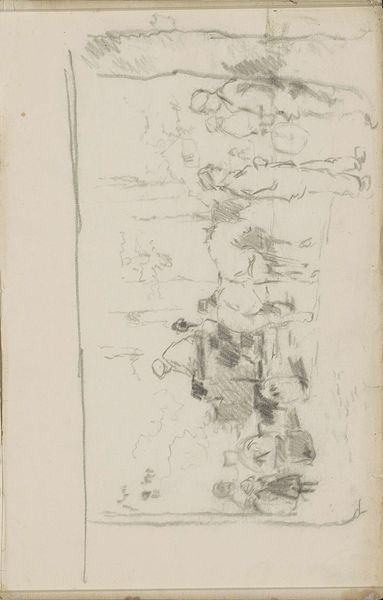
drawing, pencil
#
drawing
#
pencil sketch
#
landscape
#
etching
#
figuration
#
pencil
#
sketchbook drawing
Copyright: Public Domain: Artvee
Curator: Winslow Homer's 1881 pencil drawing, "Men and Women Looking Out to Sea, Cullercoats, England" offers a glimpse into late 19th-century coastal life. The artist captures figures gazing toward the horizon. Editor: It's rather haunting, actually. The monochromatic pencil amplifies the figures' solemnity, as if burdened by the weight of the vast, unknowable sea before them. Curator: That somber quality likely reflects the economic hardships and gendered social roles present in Cullercoats, a fishing village. Women often bore the responsibility of anxiously awaiting the return of fishermen. We can infer societal norms dictating their roles in contrast with that wild and unknowable "horizon." Editor: The composition itself emphasizes this separation, this watching and waiting. Homer contrasts the rugged coastline with these soft, vaguely drawn figures. There’s an interesting repetition of forms—the rounded heads and hoods mirroring the shapes of the rocks. The hatching almost makes me believe that women and their surrounding rocks are a piece. Curator: That formal strategy certainly reinforces their shared existence. By depicting their stoic observation, Homer comments on the silent fortitude demanded of women within a patriarchal, seafaring society, connecting this piece to burgeoning feminist discourse. The sea becomes this all-powerful but uncommunicative deity whose actions impact gender dynamics in such portuary villages. Editor: The restraint in mark-making is so powerful! There's a sparseness, yet such depth. You could read the entire thing through a lens of formalism to the point where Homer wanted the formal components to suggest isolation and dependency through a muted scale of grayscale. Curator: Yes, a close analysis allows us to access and interpret all the sociological and historical factors involved during the creative process that conceived it. Ultimately, this sketch reveals how personal experience informs larger social and cultural patterns. Editor: I come back to those repeated rounded shapes and lines, really well conceived... Curator: An intimate visual diary then of Victorian-era coastal communities!
Comments
No comments
Be the first to comment and join the conversation on the ultimate creative platform.

